Hidradenitis suppurativa is a rare skin disorder when red or dark lesions appear on the skin. Commonly, it affects the groin, genitals, and armpits. It usually occurs in the areas of the body where there is the most sweat or where the skin is in contact.
In some cases hidradenitis suppurativa affects the hair line, inner tights, and the area under the breasts and behind the ears. The cause of hidradenitis suppurativa is an inflamed hair follicle or oil gland in the skin.
Signs and Symptoms
The lesions on the skin often appear in clusters. They can grow very slowly for a long time and eventually they can rupture. The pus which can have a foul odor can leak out of the lesions. The lesions may vary in size. They can be tiny but in severe cases, they can be an inch in diameter. This skin condition can also be painful, burning or itching.
These symptoms may get worse if a person sweats a lot, smokes, or is overweight and under a lot of stress. Sometimes exposure to the sun or any source of heat may also make the symptoms worse. Hormone changes can cause hidradenitis suppurativa and affect the symptoms.
Diagnosis
In order to make a diagnosis your doctor will perform a physical examination of the skin and take a sample of the pus from the lesion. Additional blood tests may be performed. It is important for you to see your doctor if you notice any skin changes because early diagnostics and proper treatment can help you to deal with the lesions and stop the disorder from progressing.
Treatment
The cure for hidradenitis suppurativa does not exist but you may get the treatment according to the severity of the symptoms.In mild cases, the treatment involves proper hygiene, usage of antibacterial soap, and warm compressions. If your condition is not so severe, the best option for you would be topical creams or ointments, or oral medications.
There are various types of oral medications which can be used in the treatment of hidradenitis suppurativa.
Antibiotics can reduce the spreading of the disorder and stop the symptoms from getting worse. Retinoid medications affect the function of the oil glands. Birth control pills may be helpful if hidradenitis suppurativa was caused by hormone changes. Systemic steroids may decrease the pain, swelling and inflammation.
The most severe cases are treated surgically. The surgery may include drainage of the lesions, removal of the lesions, or removal of the affected skin. Unfortunately, all these surgical procedures will not prevent hidradenitis suppurativa from recurring again.
- It is a disabling disease with great psychological and functional impact on patients due to pain and malodorous discharge of the lesions. Prevalence estimates vary depending on the method of data collection and ethnic background, but range between 0.7% and 1.2%, according to the largest cross-sectional and registry-based studies; in most patients, onset of HS takes place after puberty, and the disease predominantly affects women in Western countries.
- The pathogenesis of HS is not yet well understood, but there is a consensus in considering HS a multifactorial disease with implication of different immunological factors. This makes HS a complex disease with a challenging approach.
- The role of microbiome in HS has been studied for many years and antibiotics are first-line therapy for HS, but antimicrobial treatment alone is unlikely to control disease activity. Monotherapy is considered for mild disease, but in advanced disease, combination with other treatments is needed.
- Topical resorcinol 15% once daily has been associated to good clinical response in an open-label study, including 65 patients with Hurley I and II HS. Overall, 85.2% (52/65) of patients achieved HiSCR at week 12, and >80% of reduction in AN count was observed. The number of sinus tracts remained unchanged, but a significant reduction in the average length and thickness was observed with ultrasonography at week 12.
- A phase II open-label study is ongoing to evaluate the effect of topical gentian violet as an antiseptic and wound healing therapy in HS (NCT04388163). A phase II open-label study with topical LTX-109 aims to evaluate its antimicrobial and anti-inflammatory effects in HS treatment (NCT04756336). Also, since biofilm contributes to inflammatory response in HS, its composition and changes after applying a topical antibiofilm surfactant wound gel are under study (NCT04648631).
- Tetracyclines (tetracycline, doxycycline, minocycline, lymecycline) are considered first-line oral treatment for HS based on clinical experience. A recent multicenter prospective cohort study showed significant decrease in IHS4 from baseline and a 40% of HiSCR achievement after 12-week treatment with tetracycline. Likewise, a retrospective study comparing the efficacy of lymecycline (300?mg daily) versus the combination therapy clindamycin and rifampicin (600?mg plus 600?mg daily) during 10?weeks in 52 patients (26?per group) observed a 57.7% and 53.8% HiSCR achievement, respectively.
- Oral retinoids have been reported to modulate IL-6 and IFN-? activity as well as exert antiproliferative activity in keratinocytes. However, there is no compelling evidence of their effect in lesional HS skin. Acitretin results in HS are variable (doses ranging from 0.5 to 0.6?mg/kg/d and mean duration of 3–12?months), with response rates close to 50%75 and high recurrence rates in monotherapy (up to 40% as reported by Puri and Talwar). However, good clinical outcomes have been reported in some series. Acitretin should be considered a second- or third-line therapy for HS.
- Recommendations for the surgical management of acute HS lesions rely on low-quality, uncontrolled, retrospective reports. Incision and drainage of acute lesions provide a rapid relief of the symptoms, but recurrence rates are close to 100%. Deroofing, with lower recurrence rates (20–40%), is adequate to treat localized lesions or all the lesions of one anatomical site in Hurley I–II stage. Limited local excision consists in the excision of separate lesions with surgical margins; it is indicated for Hurley I–II HS and has similar recurrence rates to deroofing.
- Laser and photodynamic therapy (PDT) have been used alone and in combination with other therapies with variable results. Comparison between treatment modalities is challenging because there are no standardized treatment protocols using these devices and settings vary between machines. Larger randomized controlled trials are needed to elucidate their role and determine the optimal treatment settings.


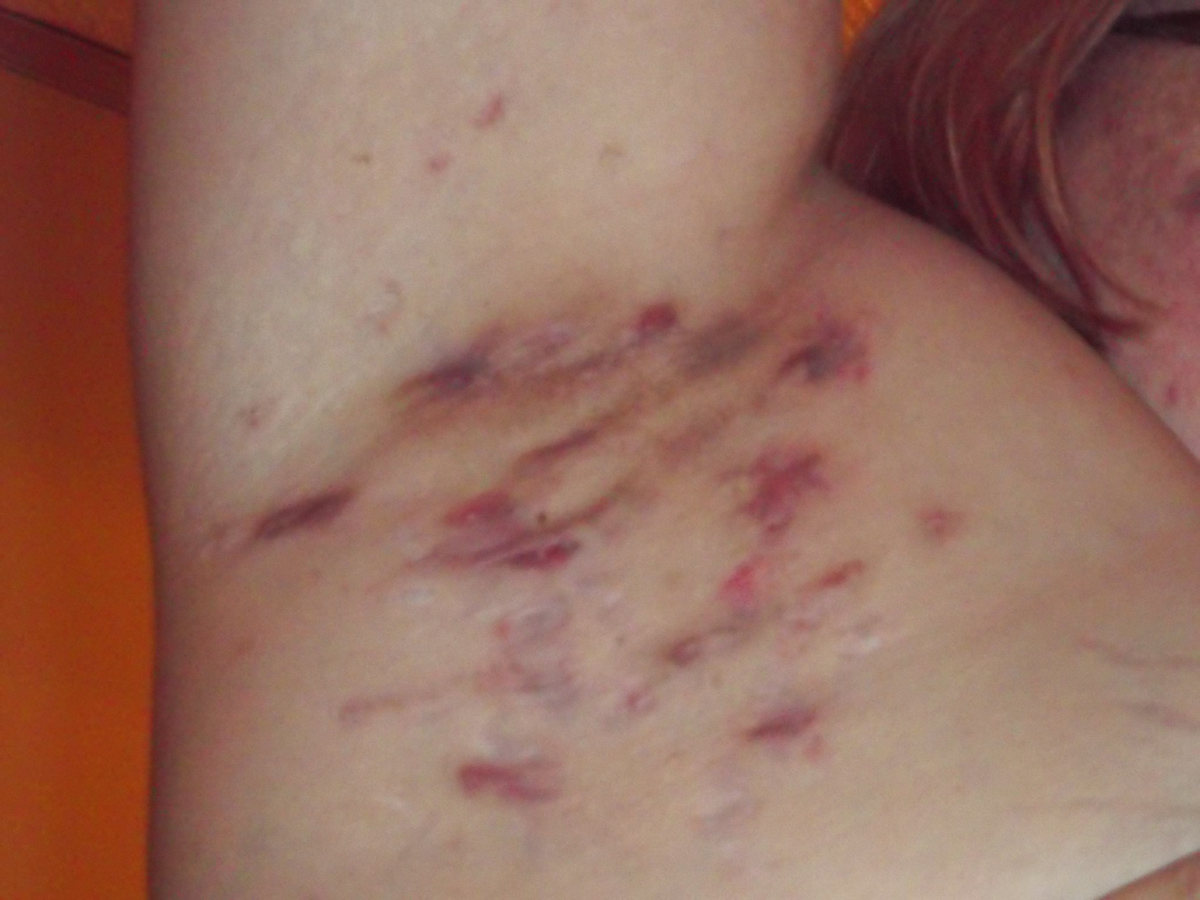
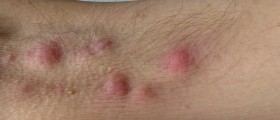
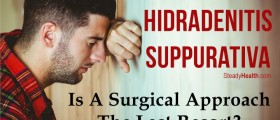
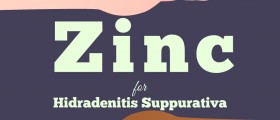
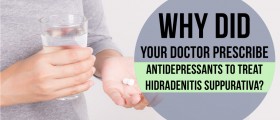

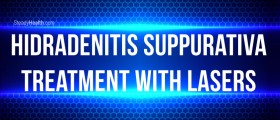

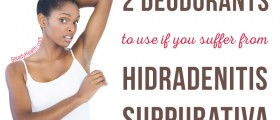
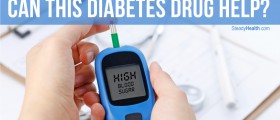
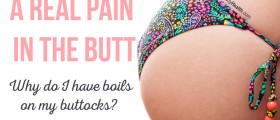


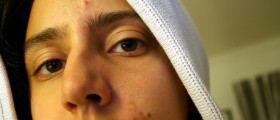


Your thoughts on this
Loading...